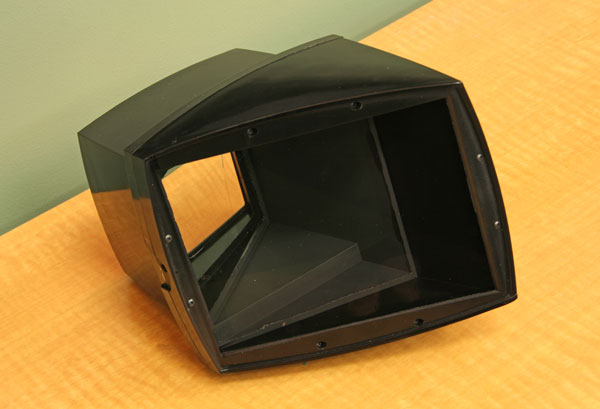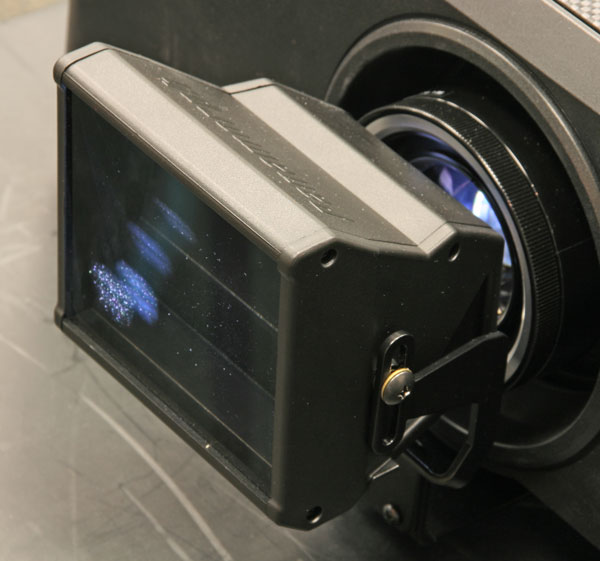Panamorph Anamorphic Lenses

Also on hand last week at Stewart Filmscreen was Panamorph with a new flagship anamorphic lens. The DC1 features fully sealed optics as well as a new optical coating and light path, all for $10,000 including a motorized sled. It's in the prototype stage, so we didn't get to see it in action.

At the other end of Panamorph's line of anamorphic lenses is the $3000 FVX200, which is designed to be permanently mounted in front of a projector's primary lens. For widescreen movies, the projector vertically upscales the image to 1080 pixels while the lens vertically compresses or "squashes" the image to fill a 2.40:1 screen with full 1920x1080 resolution. For 16:9 content, you turn off the projector's vertical scaling and engage its 4:3 aspect ratio, which the lens vertically compresses to 16:9.
However, this results in a resolution of 1440x1080. Why? Because the projector's 4:3 mode horizontally downscales the image, losing 25 percent of the 16:9 horizontal resolution. According to Panamorph, vertical resolution is much more important to the perception of detail than horizontal resolution, so this reduction is barely visible. On the other hand, if you don't use an anamorphic lens, you see full resolution and brightness on 16:9 material, but widescreen movies have a resolution of 1920x800 or so with reduced brightness because not all pixels are contributing to the image. So if you primarily watch movies and you can't afford a moveable sled for the anamorphic lens, a fixed lens is an acceptable tradeoff.
Of course, mounting the anamorphic lens on a moveable sled avoids this compromise altogetheryou move it in front of the primary lens and engage the projector's vertical upscaling for widescreen movies or move it away from the primary lens and disengage vertical upscaling for 16:9 material. You see 1920x1080 resolution and the same brightness in both cases (except for a bit of light loss through the extra lens).
As you might expect, this approach is much more expensive than a fixed-lens solution. You can get a manual sled with a Panamorph UH480 lens for $5000 or a motorized sled with the same lens for $7000. You can also use the UH480 in a fixed-lens setup, in which case the price drops to $4000.

Aside from being larger than the FVX200 (which is an updated version of the UV200 as identified in this illustration), the UH480 horizontally stretches the image rather than vertically compressing it, but the resulting aspect ratio is the same. BTW, the new DC1 is an updated version of the UH480.
You might have noticed that I specified a 2.40:1 screen earlier. During the demo, we were told that most widescreen movies made since the 1970s were actually shot with an aspect ratio of 2.39 or 2.40:1, not 2.35:1 as I had always believed. When these movies are projected on a 2:35:1 screen, a bit of the image extends beyond the sides of the screen. To avoid this, you must zoom the primary lens out a bit, leaving very thin black bars at the top and bottom of the screen.
Here's another important point discussed during the demo. Anamorphic lenses are fully compatible with 3D, but virtually no 3D-capable projectors can perform anamorphic vertical upscaling and 3D simultaneouslythe only exception I know of is the Digital Projection Titan 1080p 3D. Also, the Panamorph reps said that Lumagen's latest Radiance outboard processor will do this when it ships in a couple of weeks.
It sure is an interesting time to be a home theater geek!





























































